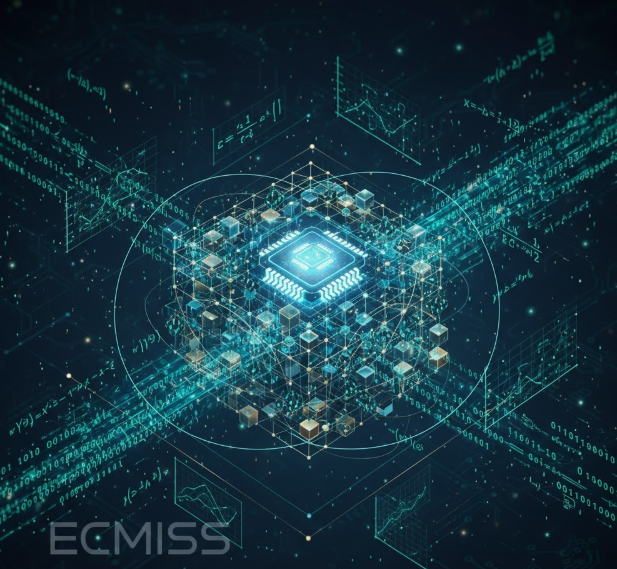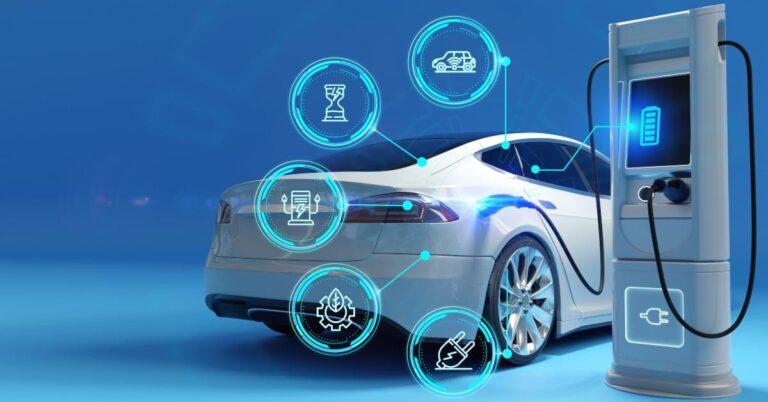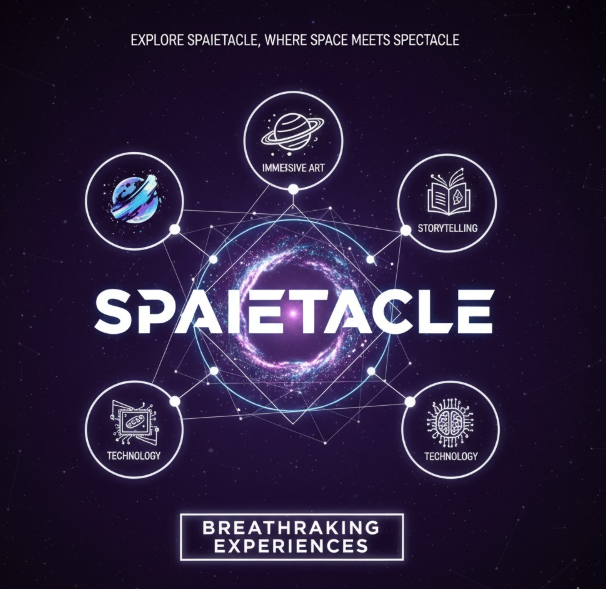ECMISS Computational Modeling and Intelligent Systems Structure
Rvolutionary Computational Modeling and Intelligent Systems Structure represents a revolutionary framework that unites artificial intelligence, data science, and systems theory to create adaptive, self-evolving systems capable of continuous learning and optimization. Unlike traditional static models that depend on fixed algorithms and constant human intervention, ECMISS integrates evolutionary computation and intelligent feedback loops to mirror biological evolution in the digital realm. This enables systems to adapt dynamically to real-world changes, improving performance over time. Its significance spans multiple domains—enhancing decision-making and efficiency in business, driving automation and innovation in technology, and advancing the study of adaptive intelligence in research. Ultimately, it bridges human cognition and machine intelligence, fostering a collaborative environment where technology evolves in harmony with human creativity.
The Conceptual Framework of ECMISS
Foundational Principles
It is grounded in multiple disciplines:
- Cybernetics, which studies control and communication in machines and living organisms.
- Artificial Intelligence, focusing on perception, learning, and reasoning.
- Systems Theory, emphasizing holistic interconnections and feedback.
- Evolutionary Computation, using genetic algorithms and optimization inspired by natural selection.
Together, these foundations empower it to operate as a self-regulating, adaptive system, capable of improving itself through feedback loops, data-driven adaptation, and continuous optimization.
The Philosophy Behind ECMISS
The philosophical underpinning of it in mimicking nature’s intelligence is a blend of flexibility, evolution, and balance. Nature never stops adapting, and it mirrors this by creating human-centric systems that maintain autonomy while remaining ethically guided and controllable.
Its design philosophy promotes ethical AI, sustainable innovation, and efficient system evolution, ensuring that as technology grows more capable, it remains aligned with human goals and values.
The Core Objectives
The key objectives of it include:
- Automating intelligent decision-making across complex environments.
- Enhancing process efficiency and scalability in both digital and physical systems.
- Supporting real-time learning and feedback, allowing systems to refine themselves with every interaction.
Historical Background and Evolution
Early Foundations (1950s–1980s)
The origins of ECMISS can be traced back to early work in cybernetics and control theory, pioneered by figures such as Norbert Wiener. These early models introduced the idea of feedback-based learning systems—precursors to modern adaptive algorithms. During this period, information feedback systems began shaping automation, robotics, and early computational theories.
Rise of AI and Neural Networks (1990s–2010s)
The next stage of evolution emerged with the rise of neural networks, genetic algorithms, and machine learning. Researchers began integrating evolutionary computation with modeling frameworks to optimize complex problems. The explosion of big data and cloud computing further enabled large-scale learning systems capable of real-time processing and analysis.
The Formalization of it (2020s–Present)
In the 2020s, it gained recognition as a formalized framework that unifies AI, evolutionary computation, and decision theory. It provided a structured method for creating adaptive, intelligent systems applicable across industries—from healthcare and finance to engineering and education.
ECMISS as a Business Strategy (Human-Centric Model)
Strategic Role in Modern Enterprises
It is more than a technical model—it’s a strategic enabler of digital transformation. By embedding adaptive intelligence into business processes, organizations can enhance collaboration, agility, and innovation. It systems help enterprises shift from reactive management to proactive evolution, where decisions are informed by continuous data feedback.
Key Business Benefits
The implementation of ECMISS brings measurable benefits:
- Real-time KPI tracking enables dynamic performance management.
- Feedback-driven systems improve employee and stakeholder engagement.
- Adaptive process optimization reduces inefficiencies and accelerates growth.
Real-World Business Results
Empirical evidence suggests the tangible impact of it:
- A 30% reduction in production lead times in manufacturing sectors.
- A 20% improvement in patient satisfaction within healthcare systems.
- A 40% increase in user engagement among technology startups leveraging intelligent automation.
Implementation Best Practices
To successfully integrate it:
- Clearly define business objectives and desired outcomes.
- Secure multi-level stakeholder support for system transformation.
- Begin with pilot programs to test adaptability before enterprise-wide deployment.
Computational Framework (Technical Deep Dive)
Technical Foundations
It integrates multiple computational techniques:
- Evolutionary Algorithms (GA, PSO) – mimic natural selection to find optimal solutions.
- Neural and Cognitive Modeling – emulate human-like reasoning and perception.
- Decision Theory – balances uncertainty, probability, and reward in automated decision-making.
Adaptive Learning Mechanisms
The framework uses supervised, unsupervised, and reinforcement learning models to continually refine performance. Feedback loops ensure the system learns from both successes and failures, enhancing accuracy over time.
Real-Time Data Integration
ECMISS depends on real-time data collected from sensors, APIs, and IoT devices. This live data stream is processed by a Data Interaction Layer, ensuring instant responses to environmental changes and user inputs.
System Architecture
The architecture follows a modular, layered design to ensure scalability. Each module handles specific tasks—data acquisition, modeling, optimization, and decision-making—while interconnected feedback loops drive continuous improvement.
Structural Breakdown: How ECMISS Works
- Layer 1: Data Acquisition and Sensing
Collects data from multiple sources including sensors, databases, or web APIs. - Layer 2: Modeling and Simulation
Builds mathematical models that simulate potential outcomes. - Layer 3: Optimization
Applies evolutionary computation to refine models and select optimal solutions. - Layer 4: Machine Learning and Adaptation
Continuously adjusts based on results and environmental feedback. - Layer 5: Decision-Making Interface
Converts insights into actionable strategies or automated responses.
Core Components of EC MISS
| Component | Function | Real-World Use |
| Evolutionary Algorithms | Optimization through simulation and mutation | Drone routing, logistics planning |
| Neural Modeling | Simulates cognitive processes for intelligent decision-making | Brain mapping, predictive AI |
| System Structure | Provides modular, scalable framework | Smart grids, urban planning |
| Learning Mechanisms | Enables dynamic adaptation through ML | Adaptive education systems |
| Decision Theory | Guides probability-based choices | Financial forecasting |
| Data Interaction Layer | Manages real-time data integration | IoT ecosystems |
| Model Calibration | Ensures accuracy and precision | Medical diagnostics |
Usage in Real-World Applications
Healthcare
In the healthcare sector, it plays a transformative role by enabling predictive diagnostics and personalized medicine. Through continuous data integration from medical devices, electronic health records, and genetic profiles, it systems can forecast potential health risks before symptoms even appear. By analyzing vast datasets in real-time, these systems support doctors in designing tailored treatment plans that adapt as the patient’s condition evolves. For example, ECMISS-driven models can predict heart disease progression or suggest medication adjustments based on lifestyle data and biometric monitoring.
Smart Cities
It provides the backbone for smart city infrastructure, integrating traffic management, energy distribution, and emergency response systems. Using real-time data from IoT sensors, cameras, and public utilities, its algorithms optimize traffic flow, reduce energy wastage, and improve urban safety. For instance, an based traffic system can dynamically reroute vehicles during congestion, while its predictive models anticipate high-demand electricity periods, enabling better resource allocation and sustainability.
Finance
In the financial sector, it enhances algorithmic trading, market simulation, and risk management. Traditional trading systems rely on pre-set rules, but ECMISS incorporates adaptive algorithms that evolve with market behavior. This allows for accurate market predictions, optimized portfolio management, and early detection of anomalies. By simulating thousands of market scenarios, it empowers investors with predictive insights that enhance profitability while mitigating risk exposure.
Robotics and Aerospace
Robotics and aerospace industries depend on it for autonomous control and obstacle avoidance. Intelligent drones and autonomous vehicles use frameworks to process data from sensors and respond in real-time to environmental changes. In aerospace, it optimizes flight trajectories, maintenance schedules, and fuel consumption through adaptive modeling. Its ability to learn from previous missions ensures continuous improvement in safety and efficiency.
Education
In education, it drives adaptive e-learning platforms that tailor content to each student’s learning pace, strengths, and weaknesses. Through real-time feedback loops, these systems identify areas where learners struggle and modify the instructional approach accordingly. This promotes personalized education, making learning more engaging and efficient while supporting educators with actionable performance analytics.
Agriculture
Agriculture has seen revolutionary advancements through precision farming. By analyzing data from weather forecasts, soil sensors, and satellite imagery, it models optimize irrigation, fertilizer use, and crop selection. Farmers can make data-driven decisions that reduce waste, improve yield, and ensure sustainability. As climate conditions change, ECMISS adapts, providing updated recommendations to maintain productivity and environmental balance.
Comparative Analysis: ECMISS vs Traditional Models
| Feature | ECMISS | Traditional Models |
| Adaptability | Dynamic, self-learning systems | Static, rule-based frameworks |
| Scalability | Highly scalable across domains | Limited and rigid in expansion |
| Real-Time Integration | Continuous data flow and feedback | Batch processing with delays |
| Intelligence | AI-powered, adaptive reasoning | Simple, rule-driven logic |
| Human Intervention | Minimal, autonomous operation | Requires constant oversight |
| Efficiency | High, due to real-time optimization | Moderate, limited by manual updates |
This comparison highlights it as a revolutionary upgrade over traditional computational models. While older systems focus on stability, it prioritizes growth, intelligence, and real-time adaptability, making it suitable for modern dynamic environments.
Implementation Framework for Businesses
Step-by-Step Adoption Process
- Define Objectives – Identify specific goals such as automation, decision optimization, or data analytics.
- Engage Stakeholders – Involve decision-makers, IT specialists, and end-users early to ensure alignment.
- Train Teams – Build expertise in AI, data handling, and system management.
- Launch Pilot Project – Start with a controlled deployment to measure ECMISS effectiveness.
- Monitor and Optimize – Use performance analytics to refine the system continuously.
- Scale and Document – Expand across departments while maintaining thorough documentation for scalability.
Tools and Infrastructure
Implementing requires a robust digital ecosystem:
- Cloud Computing Platforms for scalable data storage and processing.
- AI Model Management Systems for training and versioning algorithms.
- KPI Dashboards for real-time monitoring of business performance and outcomes.
Key Success Factors
The success depends on:
- Cross-functional alignment between management, IT, and operations.
- Data integrity to ensure model accuracy and reliability.
- Ongoing performance evaluation to adapt to evolving market conditions.
Case Studies of ECMISS Success
Manufacturing
A global manufacturing firm managed to manage production scheduling and inventory flow. The adaptive system predicted equipment downtime, optimized logistics, and reduced waste—achieving a 30% improvement in overall efficiency.
Healthcare
A healthcare network integrated ECMISS for centralized patient data management, improving diagnostics accuracy and streamlining communication between medical teams. Predictive modeling helped reduce misdiagnoses and improved patient outcomes by 20%.
Technology
A technology company used to enhance agile development workflows, enabling automated quality testing and feedback-driven updates. This led to a 40% reduction in feature launch times, improving competitiveness and customer satisfaction.
Challenges in Implementation
Organizational Barriers
The biggest hurdle in adoption is organizational resistance. Employees may fear automation or struggle to adapt to new workflows, making effective change management essential.
Technical Challenges
Complexities arise due to data silos, system incompatibilities, and high computational requirements. Integrating ECMISS across legacy systems often requires restructuring infrastructure and ensuring high data quality.
Ethical and Interpretability Concerns
Because it uses deep learning and evolutionary models, decision-making processes can become opaque. Issues like algorithmic bias and lack of explainability may undermine trust if not properly managed.
Overcoming These Challenges
Solutions include:
- Implementing explainable AI (XAI) frameworks for transparency.
- Conducting regular algorithmic audits.
- Starting with small-scale projects to demonstrate tangible value.
- Promoting clear communication between data scientists, executives, and stakeholders.
Sustaining Over Time
Continuous Improvement Cycle
It thrives on iteration. Regular KPI tracking, performance audits, and dataset updates ensure the system evolves alongside business needs and environmental changes.
Employee and System Feedback
Combining human intuition with machine feedback strengthens ECMISS performance. Human insights help contextualize AI findings, leading to better-informed decision-making.
Maintenance Tools
Modern ecosystems rely on visual dashboards, AI monitoring systems, and automated alert mechanisms to ensure uninterrupted operation and timely optimization.
Future Trends in EC MISS
The future of is being shaped by emerging technologies that will dramatically enhance its capabilities:
- Quantum Computing Integration – Unlocks ultra-fast parallel processing for complex model simulations.
- Digital Twin Systems – Enables real-time virtual replicas of physical environments for predictive experimentation.
- Neurosymbolic AI – Combines symbolic reasoning with neural networks to achieve human-like logic.
- Biohybrid and DNA Computing Models – Introduces biologically inspired computation for enhanced adaptability.
- Blockchain-Based ECMISS – Ensures transparency, security, and decentralization in data-driven ecosystems.
Conclusion
It represents a bold leap forward in how humanity designs, understands, and interacts with intelligent systems. It fuses evolutionary computation, modeling, and machine intelligence into an adaptable architecture that learns and evolves autonomously.
By bridging human cognition with computational logic, ECMISS serves as the cornerstone for the next generation of automation, decision-making, and innovation. Its potential reaches beyond industries—transforming education, governance, and even scientific discovery.
As technology advances, it stands as the embodiment of adaptive intelligence—the blueprint for a world where systems evolve not just to perform better, but to think smarter, act ethically, and collaborate with humanity toward a more intelligent future.






